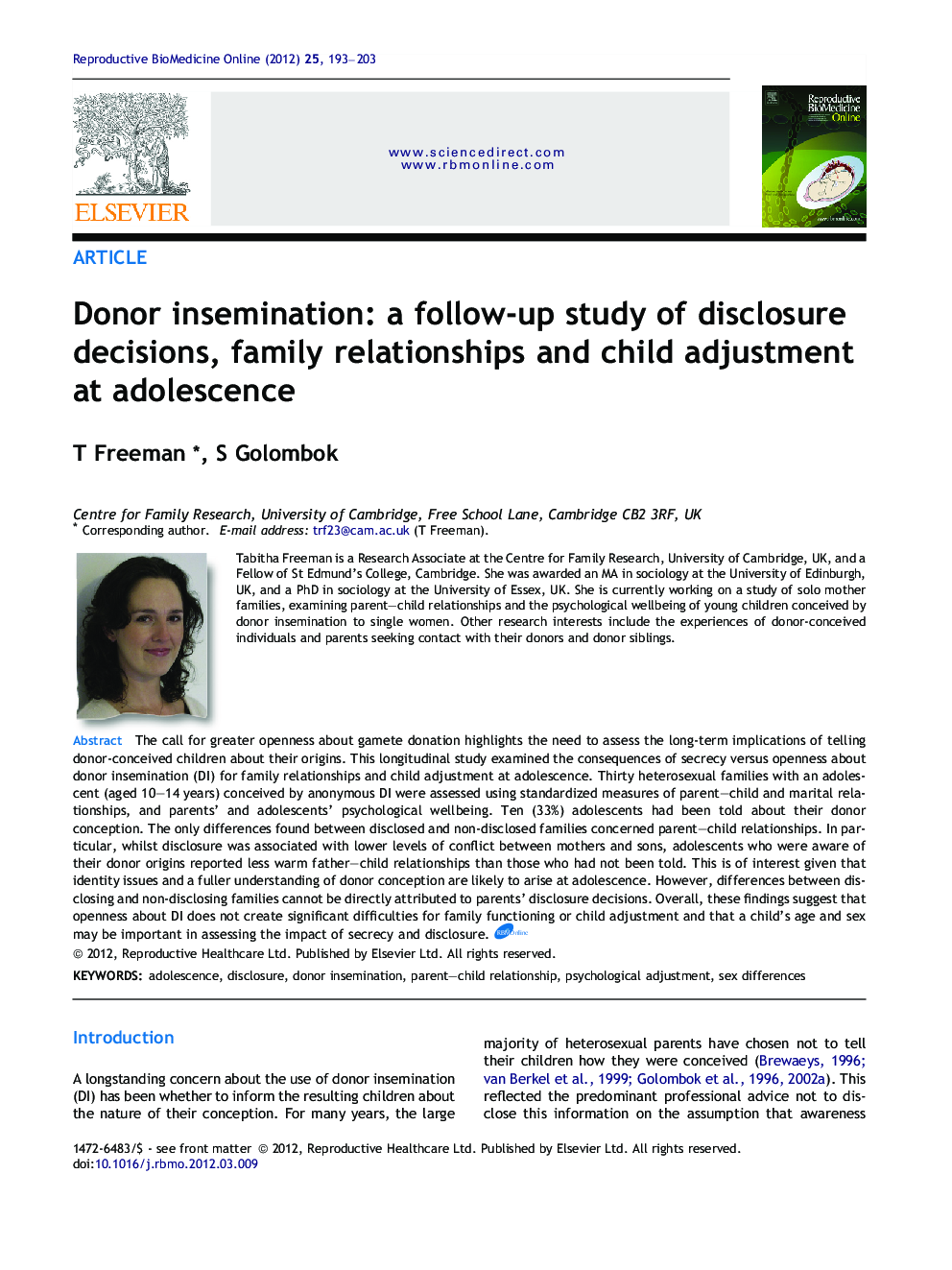| Article ID | Journal | Published Year | Pages | File Type |
|---|---|---|---|---|
| 3970459 | Reproductive BioMedicine Online | 2012 | 11 Pages |
The call for greater openness about gamete donation highlights the need to assess the long-term implications of telling donor-conceived children about their origins. This longitudinal study examined the consequences of secrecy versus openness about donor insemination (DI) for family relationships and child adjustment at adolescence. Thirty heterosexual families with an adolescent (aged 10–14 years) conceived by anonymous DI were assessed using standardized measures of parent–child and marital relationships, and parents’ and adolescents’ psychological wellbeing. Ten (33%) adolescents had been told about their donor conception. The only differences found between disclosed and non-disclosed families concerned parent–child relationships. In particular, whilst disclosure was associated with lower levels of conflict between mothers and sons, adolescents who were aware of their donor origins reported less warm father–child relationships than those who had not been told. This is of interest given that identity issues and a fuller understanding of donor conception are likely to arise at adolescence. However, differences between disclosing and non-disclosing families cannot be directly attributed to parents’ disclosure decisions. Overall, these findings suggest that openness about DI does not create significant difficulties for family functioning or child adjustment and that a child’s age and sex may be important in assessing the impact of secrecy and disclosure.As greater openness about sperm and egg donation is being encouraged in many countries, it is vital to assess the long-term implications of telling donor-conceived children about their origins. This study examined the consequences of parental secrecy versus openness about donor insemination (DI) for family relationships and children’s social and emotional development at adolescence. Thirty heterosexual families with an adolescent (10–14 years) conceived using an anonymous sperm donor took part, having first been assessed during early childhood (4–8 years). Interviews and questionnaires were administered to measure the quality of parent–child and marital relationships, and parents’ and adolescents’ psychological wellbeing. Ten of the adolescents had been told about their donor conception. The only differences found between families where children had, or had not, been told about the DI concerned parent–child relationships. In particular, whilst openness about DI was linked with lower levels of conflict between mothers and sons, adolescents who were aware of their donor origins reported less warm father–child relationships than those who had not been told. This is of interest given that identity issues and a fuller understanding of the implications of donor conception are likely to arise at adolescence. However, differences between disclosing and non-disclosing families cannot be directly attributed to parents’ disclosure decisions and may reflect other differences between these families. Overall, these findings suggest that openness about DI does not create significant difficulties for family functioning or children’s psychological wellbeing, and that a child’s age and sex may be important in assessing the impact of secrecy and openness.
